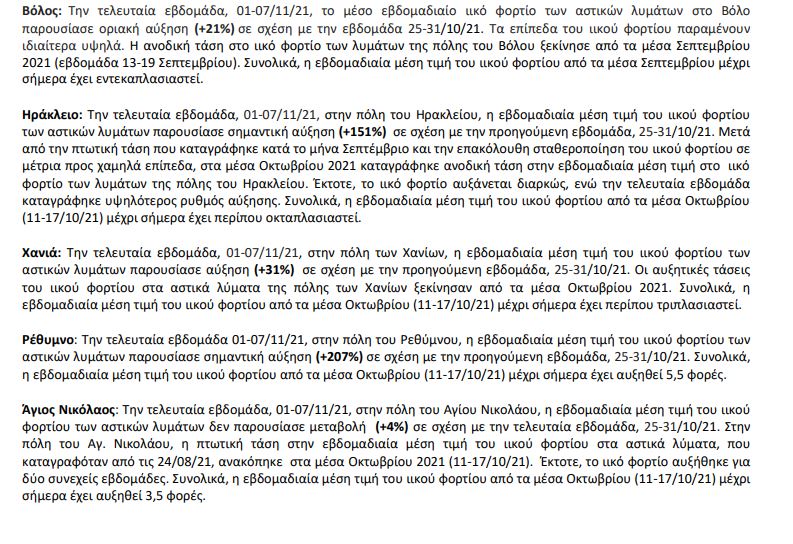During the week 1 to 7 November 2021, there were increasing or stabilizing trends, compared to the week 25 to 31 October 2021, in the average weekly viral load of SARS-CoV-2 in the urban wastewater of eleven of the thirteen regions (11/13) which were checked by the National Network of Sewage Epidemiology (EDEL) of EODY.
Specifically, in the last week, 01-07 / 11/21, in the city of Heraklion, the weekly average value of the viral load of urban wastewater showed a significant increase (+ 151%) compared to the previous week, 25-31 / 10 / 21.
After the downward trend recorded in September and the subsequent stabilization of the viral load at moderate to low levels, in mid-October 2021 there was an upward trend in the weekly average value of the viral load of the wastewater of the city of Heraklion. Since then, the viral load has been steadily rising, with a higher rate of increase in the last week.
Overall, the weekly average value of the viral load from mid-October (11-17 / 10/21) to date has increased almost eightfold.
In addition, in the last week, 01-07 / 11/21, the average weekly viral load in the urban wastewater of the Attica Region showed an increasing trend, with a statistically significant change (+ 61%) of the weekly average compared to the previous week, 25 -31/10/21. The upward trend in the viral load of sewage in the Attica Region started in mid-September 2021. Since then, the viral load has been gradually increasing with the largest increase in the last two weeks. In total, the average weekly value of the viral load has quadrupled from September 2021 until today.
During the same period, in Thessaloniki, the weekly average value of the viral load of urban wastewater showed an increase (+ 43%) compared to the previous week, 25-31 / 10/21. The weekly average value of the viral load from mid-September to date has increased sixfold. In particular, from 16/10/21 onwards, o
The rate of increase of viral load in sewage has increased significantly with the result that the viral load in sewage doubles every 13 days.
At the same time, in the last week, 01-07 / 11/21, the average weekly viral load of urban wastewater in Larissa remained stable (0%) compared to the week 25-31 / 10/21. Viral load levels remain particularly high. The upward trend in the viral load of sewage in the city of Larissa started in mid-September 2021 (week 13-19 September). Overall, the weekly average value of the viral load from mid-September to
today it has increased eightfold.
The net increases ranged from + 31% in Chania to + 207% in Rethymno, while the increase observed in Volos was marginal (+ 21%). The viral load of urban wastewater remained stable in Larissa (0%), Xanthi (0%), Agios Nikolaos (+ 4%) and Patras (+ 8%). A marginal decrease in the average weekly viral load of urban wastewater was observed in Alexandroupolis (-12%).
The viral load in the urban wastewater of the city of Corfu was detectable. It is noted that the change in the weekly average of viral load compared to the previous week can not be assessed, as the viral load of urban wastewater was not detectable then.
.












